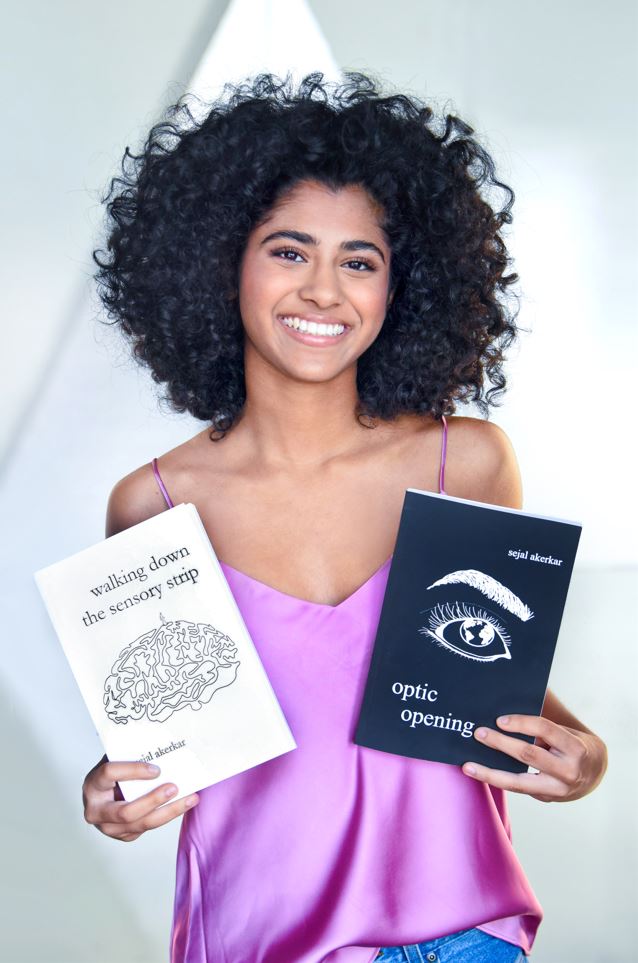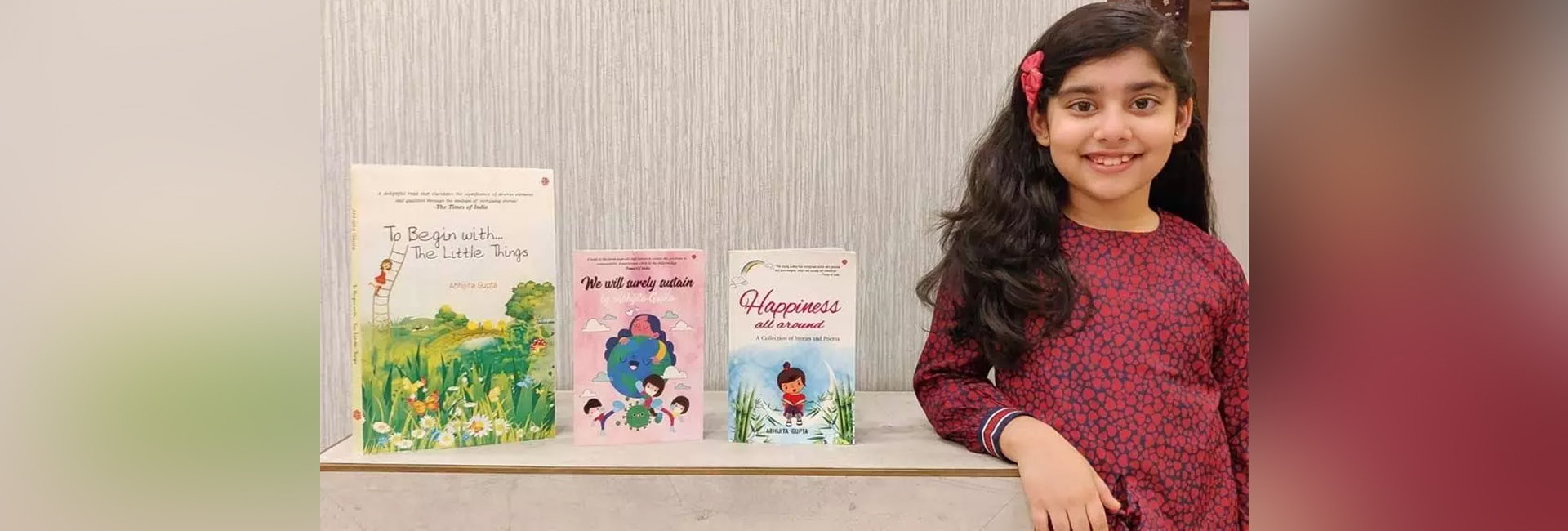(February 17, 2023) Sejal Akerkar had attended poetry camps in middle school and continued to write but hadn’t really thought about doing it as a profession. That changed when she found inspiration in the Canadian-Indian poet, artist and performer, Rupi Kaur.
Rupi’s first collection of poetry was published in 2014 and became a New York Times bestseller. “When I started reading Rupi’s poetry, I was inspired to write because she was so similar to me – a young, Indian-American student. I found great comfort in reading her poems and started to write.” By the time Sejal turned 15, she had written over 100 poems.

Sejal Akerkar
Following in the footsteps of her role model, she self-published her first poetry book, Walking down the sensory strip. The Sammamish High School student introduced her second poetry book, Optic opening to the world soon after. While the first book made it to the top 35 in the women’s category on Amazon, her second book did even better, finding a place in top 5 in the category of Asian poetry.
The India experiences
Like her parents, Sejal was born and raised in the USA. However, the seventeen-year-old spent three years of her life in Gurugram, India, where her father was posted. That’s when she came across the non-profit Udayan Care, which gave her a fresh perspective on life.
After returning to the US, the teenager published two poetry collections and on instinct, decided to donate the royalties that her books fetched. “When my books were published, I knew that I didn’t need the money earned from royalties and giving away the money to Udayan Care seemed the best thing to do,” says the youngster as she connects with Global Indian.
Udyaan Care, Sejal says, “has multiple houses and homes across India where they foster orphaned and abandoned children and give them higher education. It helps them succeed in the world instead of getting into the orphanage system.”
Sejal Akerkar is a budding poet with a resolve to be a changemaker. This young poet is sharing her life and thoughts with others through her poetry while donating all of her book proceeds to #UdayanCare. pic.twitter.com/rfXiFlP1LS
— Udayan Care (@udayancare) November 11, 2022
When Sejal and her family was in India, her mom became associated with one of the houses in Gurugram, teaching English to the girls there. “She would take me and my younger sister along to hang out with them and over time we built lasting connections,” she recalls. “We use to hear their stories of how they lost their parents, or were abandoned by them. We built deep connections and started celebrating festivals and birthdays together. We would see them all the time.”
When the family went back to the United States, they wanted to stay connected to the cause. “While my mom joined Udayan Care USA as the president, I became a volunteer. We planned lots of fundraisers and activities,” Sejal says.
Teaching poetry
These days, the teenager also teaches poetry writing in an elementary school. “It’s my after-school activity,” she tells, adding, she loves being a mentor to kids between seven to 10 years of age. “I even created the entire curriculum of the poetry class,” she says.
By applying a different approach to teaching, the young teacher enjoys great bonhomie with her little pupils. “I teach differently because I think that usually poetry is taught in a very structured manner which tends to get boring for students. I don’t teach them how it is supposed to be. I give them creative prompts,” she says.
Sejal helps her pupils imagine with visuals, drawings, videos and more, and makes them write whatever comes to their mind. This keeps them interested. “It’s like giving them a little seed and let them water it, allow sunlight to come and help them grow their poetry without structuring them or restraining them from anything.”


As for her own poetry, Sejal writes on a wide array of topics – ‘life as a teenager and how it feels to go into adulthood, about my immigrant grandparents, how they came here and what they gave up to get here’, she tells. “I also write about the destruction of nature by humans, my relationships with my loved ones, social media, technology, my friends, myself,” smiles the teenager who loves dancing and golf.
While her first two books have done well, she is in no hurry to come up with the third one, and rather prefers to evolve a bit as a poet. With all her focus on the ongoing college application process, the teenager looks forward to take up biology. “That’s complete opposite of what people would expect from me,” she chuckles adding, “I think combining creative and scientific things are very useful to the world today and I want to focus on a lot of multidisciplinary studies in my life.”




